 A reader has recently offered the following Anonymous comment on the 5/26/08 post, Capture Calendar:
A reader has recently offered the following Anonymous comment on the 5/26/08 post, Capture Calendar:“Get it straight. The public is not restricted to supporting only two options for the Callaghan Complex gather. The scoping letter asks for comments alternatives and other recommendations from the public. If someone has a better idea, they can send it in. The management levels were already set through BLMs official process, which included public involvement. That was the proper time to be involved for deciding how many horses would be allowed in these areas. This current gather scoping is for the gather to achieve those management levels.”
"At least have the decency to be accurate before smearing these people. Your population figures reported for Bald Mountain are wrong too. You need to re-interpret what is really going on. Be responsible, report the facts and remain objective. Isn't that what you want the BLM to do? You do it too. Help, don't hinder.”
Anonymous is correct in their complaint of American Herds not fully describing the scoping process for the Callaghan Complex wild horse removals, at least on paper, and it exciting to see someone wants more detailed information on how the whole WH&B Program and processes works!
As a result, American Herds wants to seize this opportunity and has added a new section called Official Resources, which provides links to laws, regulations, statistics, and more as well as a written description of how public management processes work, including what a Scoping Notice covers. Click Here to view.
In regards to Anonymous’s statement that the public was not restricted to supporting two options, in theory, this is also true. Due to the large amounts of proposals all issued at the same time by BLM, the shortest version of the proposals were given due to time constraints and concerns of overwhelming people who may be interested in providing input.
However, regarding the two options cited in the Callaghan Complex scoping proposal, the reality is, BLM is required by law to remove wild horses once their population exceeds the established Allowable Management Levels (AML) and as such, this is the first option presented by American Herds under the Callaghan Complex “choices” because it is a requirement, not a choice. While BLM may postpone the removals to a later date, they have no legal authority to NOT remove wild equids once they have been determined as exceeding their AMLs.
The second option was based on what BLM identified in their own Scoping Notice, which was to treat mares returned back on the range with the fertility control drug PZP. BLM as well as American Herds also mentioned the consideration of a trapsite adoption and since this was all that was provided by BLM in their own notice, it was duly passed on to those who may be interested.
Furthermore, while the statement of the public providing a “better idea” is technically accurate, the better idea is restricted exclusively to a better way to remove wild horses or how they will be managed when they are returned. BLM must remove the animals, so any discussion about asking them NOT too will be deemed by BLM as “outside the scope” of the proposal (as well as being illegal).
Historically, when the public has suggested or requested BLM not use helicopters to capture wild equids but to use lure trapping such as water or food or horse wranglers, BLM insists that the helicopter capture methods are the best around or the proposal area is too large to utilize less efficient and time consuming methods such as these.
Other options the public has suggested in the past included partial removals, changing AMLs, reallocating forage from livestock to wild equids, changing the panel systems used in the gather pens so wild horses and burros won’t get trapped and break their legs or necks, asking BLM to provide specifics in distances run, temperature limits and freeze branding the horses and burros right at the gather pens to help make their wild horse status more visible during transport.
All of these ideas BLM has either ignored, cited legal reasons these could not be part of the proposal or has “dismissed from analysis” for one reason or another. But if you would like to resubmit them again, who knows, maybe we will all get lucky and BLM will change their stance on the issues. Because it was a scoping period, the first in the series of public involvement, BLM may have time to incorporate any new ideas, suggestions or recommendations, so give it a try!
Options that BLM has been supportive of in the past included fertility control with PZP on the mares, castration of stallions, different gender ratios for the remaining stallions and mares, putting state brands on federal animals, as well as branding geldings and mares treated with PZP, trapsite adoptions and micro-chipping options while the verdict is still out regarding BLMs response to requests for certain kinds of herd characteristics to be preserved.
Here’s one example of how BLM treated an innovative idea in regards to the Nevada Wild Horse Range. It was suggested BLM only remove half the wild horses they were planning too during the proposed round up and then use the money they would save to fix the water systems, which were in desperate need of repair and caused an emergency situation and round up.
BLMs never responded to the suggestion but the round up was cancelled completely because other areas were deemed a higher priority. However, BLM publicly stated they would fix some of the water systems as soon as the ground thawed (Click Here to view).
Yet by the time the ground thawed, BLM said they now needed $150k (personal communication with NV WH&B Lead, Susie Stokke) and shortly after this, BLM released a new Herd Management Area Plan that no longer assured us that water would still be provided. (Click Here to view).
Now BLM has gone back on their promise and may or may not proceed with fixing the water systems! They have listed conditions for repairing the water systems and BLM will NOT fix them if Alternative A is chosen, which continues the "existing management", even though it is on public record in the 2004 land use plans that the existing management includes fixing water systems and even adding a few new ones to boot!
Instead BLM offers maintenance of water systems to be dependent on “Alternatives” that will add various population management “controls” such as castrating stallions. In another part of the woods, this could be considered extortion but not for BLM!
But the truth remains, if you have a better idea about how to remove or manage wild horses from the Callaghan Complex, send it to BLM at the address below. Just don’t be very surprised if, in the end it boils down to basically two options; removals with fertility control or removals without with perhaps a gender ratio alterative thrown in on the side as has been historically the case.
As for smearing BLM, generally, American Herds doesn’t have to because BLM does it themselves.
When I first became interested in Wild Horse & Burro Management, I didn’t know squat about anything and truly believed BLM acted in the best interest of public resources, followed the laws and were just overwhelmed with a huge task of public resource management that was understaffed and under funded. This is still partially true too as Congress creates laws to govern public resources and then fails to fund them properly! On the other hand, BLM squanders much of the money given to them and don’t seem to demonstrate very “wise use” of their own resources.
I can only “interpret” what is going on through my own experiences, of which I have had plenty of by now and it was through direct contact with BLM personnel, involvement in their proposals and researching the data, which resulted in developing a deep sense of cynicism and out right anger at the too often blatant abuse of authority as well as a betrayal of public resources held in trust for the American people and future generations that has been demonstrated all too often.
Here’s a recent example that will go down in the record books as a BLM “classic”. The Ely Field Office in Nevada implemented an emergency round up of the Antelope and Antelope Valley wild horses in December/January of this year citing a catastrophic loss of life would occur due to lack of forage because of drought conditions if they did not remove the wild horses.
While this may or may not be true, in a phone conversation with BLM manager Kyle Hansen, Mr. Hansen described the scene as “an atom bomb going off” on the range. Mr. Hansen was also kind enough to offer photos as evidence of the devastated rangeland conditions and of course, this was all very friendly and sounded good on paper except ~ it turned out the “current photos” were a year old, automatically dated by the digital camera when they were originally taken in 2006. The devastated range was the very “heart” of the emergency proposal and providing photos that were a year old really destroyed BLMs credibility on the issue.
This is not smearing, these are facts and there are tons of other such “facts” as this one BLM has generated and continues to generate.
Taking the time to research, read through mountains of documents and proposals, learning to understand the laws and regulations which BLM must abide by, and participating in those proposals is the most responsible action any member of the public can possibly take and American Herds has gone the extra step to try and share this information with others as a duty to both citizens and country instead of letting it become buried as many times BLM tries to do.
In fairness, there have been exceptions and some great people in BLM too that have been very helpful and the Battle Mountain Field Office, in charge of the Callaghan Complex, has been one of the best of any Field Office worked with. But even they “approved” a trapsite adoption for the South Shoshone wild horse round up and didn’t even bother mentioning this in their Final Decision. (Click Here to read The Event, 1/09/08) Didn’t they think this was important enough to MENTION to the general public?
Overall, the system needs serious improvements and historical data and articles has shown this to be true for a very, very long time ~ not just for those interested in wild horse and burro issues, but also ranchers, wildlife, and even BLM personnel themselves such as Erick Campbell and Bill Brooks, two long time managers with BLM that recently quit as a result of higher authorities deliberately manipulating their “objective scientific data” for the new grazing regulations in 2006 to support exclusive political agendas ~ my own research has proven this to be the case much too often as well.
Lastly, while Anonymous states the population figures for the Bald Mountain wild horses are wrong while simultaneously failing to provide any evidence to support this accusation, the following information and contacts can verify the Bald Mountain population figures are as accurate as BLM published them.
Callaghan Complex/Public Scoping Proposal, April 4, 2008
Cover Page, Dear Interested Public
Table 1. Callaghan Complex 2008 Estimated Population
Bald Mountain: 607
Click Here to view
Bald Mountain and South Shoshone HMAs,
Anonymous is correct in their complaint of American Herds not fully describing the scoping process for the Callaghan Complex wild horse removals, at least on paper, and it exciting to see someone wants more detailed information on how the whole WH&B Program and processes works!
As a result, American Herds wants to seize this opportunity and has added a new section called Official Resources, which provides links to laws, regulations, statistics, and more as well as a written description of how public management processes work, including what a Scoping Notice covers. Click Here to view.
In regards to Anonymous’s statement that the public was not restricted to supporting two options, in theory, this is also true. Due to the large amounts of proposals all issued at the same time by BLM, the shortest version of the proposals were given due to time constraints and concerns of overwhelming people who may be interested in providing input.
However, regarding the two options cited in the Callaghan Complex scoping proposal, the reality is, BLM is required by law to remove wild horses once their population exceeds the established Allowable Management Levels (AML) and as such, this is the first option presented by American Herds under the Callaghan Complex “choices” because it is a requirement, not a choice. While BLM may postpone the removals to a later date, they have no legal authority to NOT remove wild equids once they have been determined as exceeding their AMLs.
The second option was based on what BLM identified in their own Scoping Notice, which was to treat mares returned back on the range with the fertility control drug PZP. BLM as well as American Herds also mentioned the consideration of a trapsite adoption and since this was all that was provided by BLM in their own notice, it was duly passed on to those who may be interested.
Furthermore, while the statement of the public providing a “better idea” is technically accurate, the better idea is restricted exclusively to a better way to remove wild horses or how they will be managed when they are returned. BLM must remove the animals, so any discussion about asking them NOT too will be deemed by BLM as “outside the scope” of the proposal (as well as being illegal).
Historically, when the public has suggested or requested BLM not use helicopters to capture wild equids but to use lure trapping such as water or food or horse wranglers, BLM insists that the helicopter capture methods are the best around or the proposal area is too large to utilize less efficient and time consuming methods such as these.
Other options the public has suggested in the past included partial removals, changing AMLs, reallocating forage from livestock to wild equids, changing the panel systems used in the gather pens so wild horses and burros won’t get trapped and break their legs or necks, asking BLM to provide specifics in distances run, temperature limits and freeze branding the horses and burros right at the gather pens to help make their wild horse status more visible during transport.
All of these ideas BLM has either ignored, cited legal reasons these could not be part of the proposal or has “dismissed from analysis” for one reason or another. But if you would like to resubmit them again, who knows, maybe we will all get lucky and BLM will change their stance on the issues. Because it was a scoping period, the first in the series of public involvement, BLM may have time to incorporate any new ideas, suggestions or recommendations, so give it a try!
Options that BLM has been supportive of in the past included fertility control with PZP on the mares, castration of stallions, different gender ratios for the remaining stallions and mares, putting state brands on federal animals, as well as branding geldings and mares treated with PZP, trapsite adoptions and micro-chipping options while the verdict is still out regarding BLMs response to requests for certain kinds of herd characteristics to be preserved.
Here’s one example of how BLM treated an innovative idea in regards to the Nevada Wild Horse Range. It was suggested BLM only remove half the wild horses they were planning too during the proposed round up and then use the money they would save to fix the water systems, which were in desperate need of repair and caused an emergency situation and round up.
BLMs never responded to the suggestion but the round up was cancelled completely because other areas were deemed a higher priority. However, BLM publicly stated they would fix some of the water systems as soon as the ground thawed (Click Here to view).
Yet by the time the ground thawed, BLM said they now needed $150k (personal communication with NV WH&B Lead, Susie Stokke) and shortly after this, BLM released a new Herd Management Area Plan that no longer assured us that water would still be provided. (Click Here to view).
Now BLM has gone back on their promise and may or may not proceed with fixing the water systems! They have listed conditions for repairing the water systems and BLM will NOT fix them if Alternative A is chosen, which continues the "existing management", even though it is on public record in the 2004 land use plans that the existing management includes fixing water systems and even adding a few new ones to boot!
Instead BLM offers maintenance of water systems to be dependent on “Alternatives” that will add various population management “controls” such as castrating stallions. In another part of the woods, this could be considered extortion but not for BLM!
But the truth remains, if you have a better idea about how to remove or manage wild horses from the Callaghan Complex, send it to BLM at the address below. Just don’t be very surprised if, in the end it boils down to basically two options; removals with fertility control or removals without with perhaps a gender ratio alterative thrown in on the side as has been historically the case.
As for smearing BLM, generally, American Herds doesn’t have to because BLM does it themselves.
When I first became interested in Wild Horse & Burro Management, I didn’t know squat about anything and truly believed BLM acted in the best interest of public resources, followed the laws and were just overwhelmed with a huge task of public resource management that was understaffed and under funded. This is still partially true too as Congress creates laws to govern public resources and then fails to fund them properly! On the other hand, BLM squanders much of the money given to them and don’t seem to demonstrate very “wise use” of their own resources.
I can only “interpret” what is going on through my own experiences, of which I have had plenty of by now and it was through direct contact with BLM personnel, involvement in their proposals and researching the data, which resulted in developing a deep sense of cynicism and out right anger at the too often blatant abuse of authority as well as a betrayal of public resources held in trust for the American people and future generations that has been demonstrated all too often.
Here’s a recent example that will go down in the record books as a BLM “classic”. The Ely Field Office in Nevada implemented an emergency round up of the Antelope and Antelope Valley wild horses in December/January of this year citing a catastrophic loss of life would occur due to lack of forage because of drought conditions if they did not remove the wild horses.
While this may or may not be true, in a phone conversation with BLM manager Kyle Hansen, Mr. Hansen described the scene as “an atom bomb going off” on the range. Mr. Hansen was also kind enough to offer photos as evidence of the devastated rangeland conditions and of course, this was all very friendly and sounded good on paper except ~ it turned out the “current photos” were a year old, automatically dated by the digital camera when they were originally taken in 2006. The devastated range was the very “heart” of the emergency proposal and providing photos that were a year old really destroyed BLMs credibility on the issue.
This is not smearing, these are facts and there are tons of other such “facts” as this one BLM has generated and continues to generate.
Taking the time to research, read through mountains of documents and proposals, learning to understand the laws and regulations which BLM must abide by, and participating in those proposals is the most responsible action any member of the public can possibly take and American Herds has gone the extra step to try and share this information with others as a duty to both citizens and country instead of letting it become buried as many times BLM tries to do.
In fairness, there have been exceptions and some great people in BLM too that have been very helpful and the Battle Mountain Field Office, in charge of the Callaghan Complex, has been one of the best of any Field Office worked with. But even they “approved” a trapsite adoption for the South Shoshone wild horse round up and didn’t even bother mentioning this in their Final Decision. (Click Here to read The Event, 1/09/08) Didn’t they think this was important enough to MENTION to the general public?
Overall, the system needs serious improvements and historical data and articles has shown this to be true for a very, very long time ~ not just for those interested in wild horse and burro issues, but also ranchers, wildlife, and even BLM personnel themselves such as Erick Campbell and Bill Brooks, two long time managers with BLM that recently quit as a result of higher authorities deliberately manipulating their “objective scientific data” for the new grazing regulations in 2006 to support exclusive political agendas ~ my own research has proven this to be the case much too often as well.
Lastly, while Anonymous states the population figures for the Bald Mountain wild horses are wrong while simultaneously failing to provide any evidence to support this accusation, the following information and contacts can verify the Bald Mountain population figures are as accurate as BLM published them.
Callaghan Complex/Public Scoping Proposal, April 4, 2008
Cover Page, Dear Interested Public
Table 1. Callaghan Complex 2008 Estimated Population
Bald Mountain: 607
Click Here to view
Bald Mountain and South Shoshone HMAs,
Wild horse Gather Environmental Assessment
April 2007, EA# NV062-EA07-104, Page 4, Table 1.,
April 2007, EA# NV062-EA07-104, Page 4, Table 1.,
Bald Mountain 2007 Estimated Population: 379
To request your own copy of the EA with the 2007 Bald Mountain population estimates, write:
Mount Lewis Field Office
50 Bastian Road
Battle Mountain, NV 89820
(775) 635-400
WH&B Specialist~Shawna Richardson
Email: Shawna_Richardson@blm.gov
Be sure to include the EA# NV062-EA07-104 in your request.
Unfortunately, this EA is MIA on all known websites. However, there is a link to the “new” gather plan for the South Shoshone wild horse removals conducted in January 2008 BLM re-submitted on December 28, 2007 and states the original Preliminary EA and gather plan was for South Shoshone and Bald Mountain HMA. This reference can be found on page 2, 2nd paragraph.
If those interested don’t want to wait for BLM to mail them the EA, this is one way to verify BLM did indeed release the estimated 2007 wild horse population of 379 last April as American Herds reported. Click Here to view the South Shoshone wild horse removal final decision.
Finally, check BLMs National Program Office Nevada Herd Statistics for 2007 (Click Here to view) where the population estimate given for the Bald Mountain HMA as of February 28, 2007 cited 338 wild horses, just 2 months prior to BLMs release of the South Shoshone/Bald Mountain Gather EA in April.
Setting aside the fact that this EA is not available online, the question still remains from the Herd Statistic data, "How did the horses get from 338 to 607 in just two foaling seasons?"
If anyone wants to do the homework, the facts speak for themselves, so the question becomes, "Who is smearing whom here?"
To request your own copy of the EA with the 2007 Bald Mountain population estimates, write:
Mount Lewis Field Office
50 Bastian Road
Battle Mountain, NV 89820
(775) 635-400
WH&B Specialist~Shawna Richardson
Email: Shawna_Richardson@blm.gov
Be sure to include the EA# NV062-EA07-104 in your request.
Unfortunately, this EA is MIA on all known websites. However, there is a link to the “new” gather plan for the South Shoshone wild horse removals conducted in January 2008 BLM re-submitted on December 28, 2007 and states the original Preliminary EA and gather plan was for South Shoshone and Bald Mountain HMA. This reference can be found on page 2, 2nd paragraph.
If those interested don’t want to wait for BLM to mail them the EA, this is one way to verify BLM did indeed release the estimated 2007 wild horse population of 379 last April as American Herds reported. Click Here to view the South Shoshone wild horse removal final decision.
Finally, check BLMs National Program Office Nevada Herd Statistics for 2007 (Click Here to view) where the population estimate given for the Bald Mountain HMA as of February 28, 2007 cited 338 wild horses, just 2 months prior to BLMs release of the South Shoshone/Bald Mountain Gather EA in April.
Setting aside the fact that this EA is not available online, the question still remains from the Herd Statistic data, "How did the horses get from 338 to 607 in just two foaling seasons?"
If anyone wants to do the homework, the facts speak for themselves, so the question becomes, "Who is smearing whom here?"

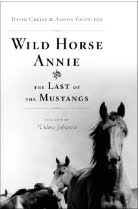








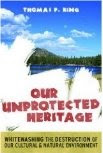



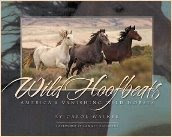




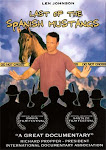





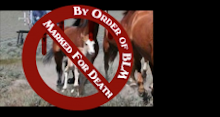
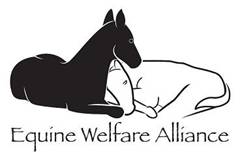
2 comments:
You have way too much time on your hands and you still didn't get it right. Which leaves your credibility in question as well.
I read the information provided with interest and decided to do my own research. I have spent most of this morning reviewing the documents posted by the BLM office in Las Vegas for the long term management of wild horses on the Nevada Wild Horse Range herd management area. It seems to me BLM took a very reasoned approach to developing a range of possible management options for management of the herd and their habitat into the future. They have conducted a very thorough analysis from where I sit, and have selected an alternative for implementation which will reconstruct the existing water developments to assure horses have the water they need. They also looked at a number of options for managing the herd and have selected an option which will slow the herd's growth rate, result in fewer gathers and less disturbance to the herd over the long term. I also note they are conducting an emergency gather at the present time through water trapping. Seems like a reasoned and considered approach to me. Brava BLM Las Vegas.
Post a Comment